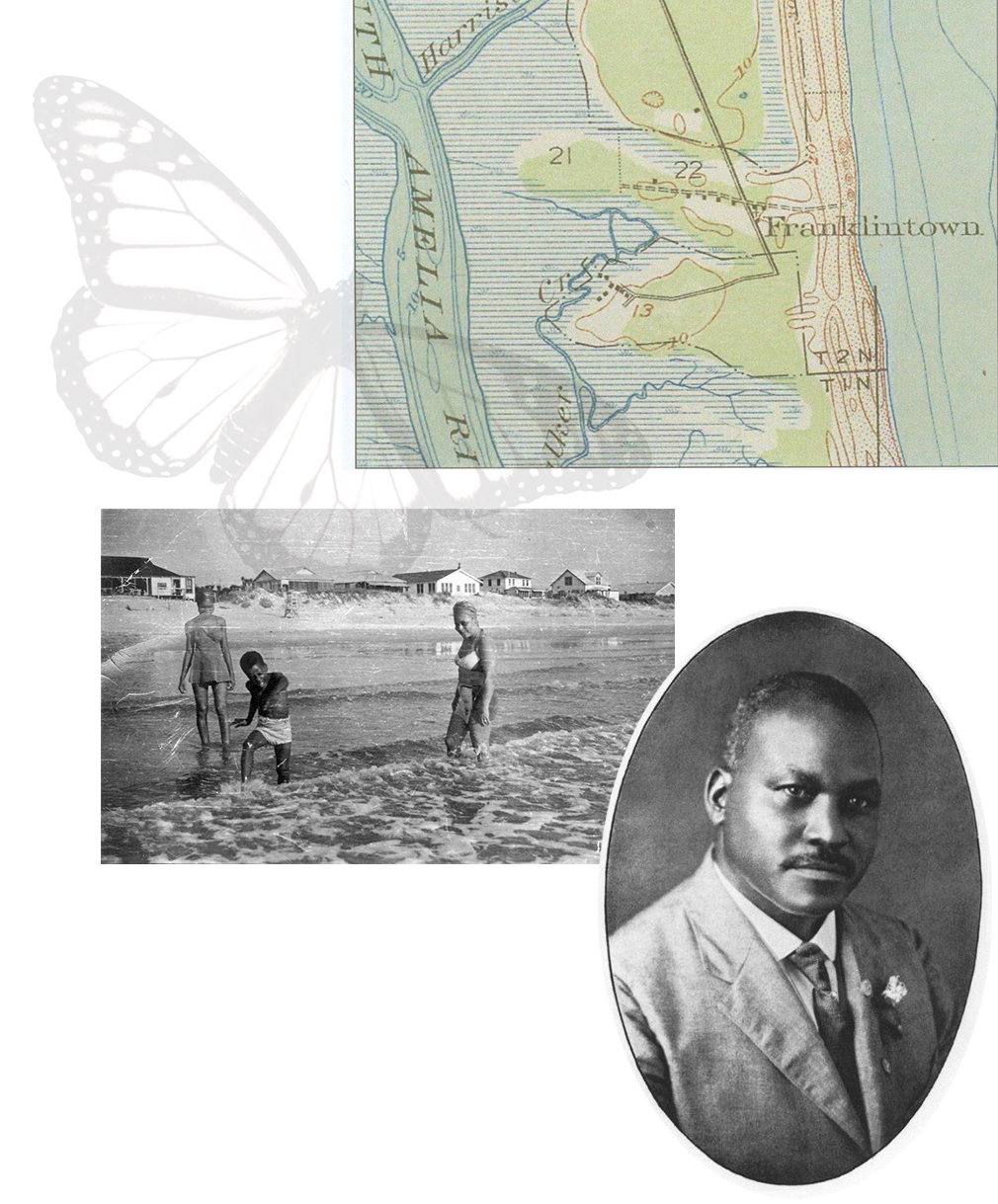Stroll American Beach or drive down its tree-lined streets, and you’ll feel a sense of place unlike any other. But to truly understand American Beach, one needs to look further, past the ocean cottages and sand dunes, to Amelia Island’s southern end and a place called Franklintown.

Founded in 1862, Franklintown grew out of the Civil War, as slaves from Amelia Island and the Harrison Plantation joined the Union Army to fight for freedom. With emancipation, they and their descendants built a self-sufficient community called Franklintown. Founding families lived on the oceanfront and riverfront for nearly a century, thriving on farming, fishing, shrimping and raising cattle.
In addition, further south of Franklintown, the Jim Crow era forced African Americans to develop separate businesses and communities that addressed the needs of the disenfranchised people. The first “Black Beach” community in Northeast Florida for recreational resort for blacks was Manhattan Beach.
As early as 1900, Jacksonville blacks visited Manhattan Beach which had a pavilion with changing rooms, a cafe and a permanent “Fresh Air Camp” built by Eartha White for tubercular children. Until the 1930s, Manhattan Beach was a mecca for black beach day trips. However, the Depression and a mysterious fire brought about the demise of the beach.
Another beach community was Butler Beach, which was founded in the late 1920s in St. Augustine. There were homes and black-owned businesses. As Manhattan Beach was destroyed, and Butler Beach grew, A. L. Lewis set his sights on the opportunity to purchase and develop land in Nassau County.
In the 1920s and 1930s, the Afro-American Life Insurance Company held beach outings in Franklintown. Because of the popularity of these outings, A. L. Lewis sought land for a resort community for his company and their families eager to escape the stress and scrutiny of segregation.
The Pension Bureau of the Afro-American Life Insurance Company purchased the first 33 acres in 1935 and acquired the remaining two parcels over a decade-long period.
Additional Resources
- An American Beach for African Americans by Marsha Dean Phelts
- American Beach: A Saga of Race, Wealth, and Memory by Russ Rymer
- The Land Was Ours: How Black Beaches Became White Wealth in the Coastal South by Andrew W. Kahrl
- Anna Madgigine Jai Kingsley: African Princess, Florida Slave, Plantation Slaveowner by Daniel L. Schafer
- Beach Lady by Russ Rymer, Smithsonian Magazine
- MaVynee “Beach Lady” Betsch, TheHistoryMakers


